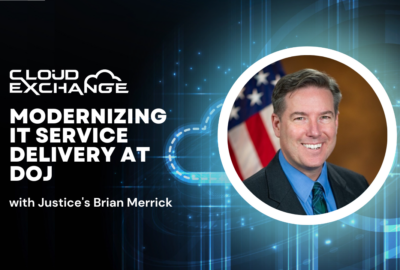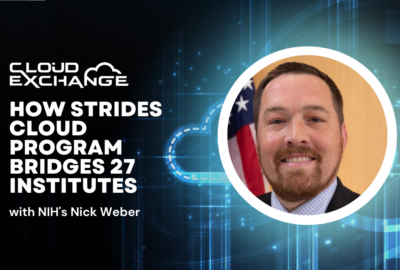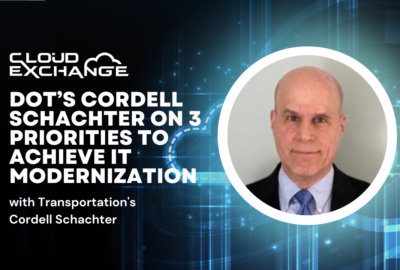

Agencies need to avoid defaulting to lift-and-shift thinking when it comes to moving services to the cloud, advises Genesys’ Steven Boberski. He shares three ...
More than a decade since the move to the cloud started across the government, agencies still have not quite gotten out of the lift-and-shift mentality.
There are plenty of examples of agencies using cloud services to obtain true modernization of business processes and citizen services.
But Steven Boberski, chief technology officer for public sector at Genesys, said he still sees lift-and-shift thinking sneak through too often.
“When you make a change — let’s say from a legacy on-premise system to a cloud system — trying to capture all that data across multiple channels or multiple components isn’t easy. So determining where to make a change is really not as easy as you think, and the default habit is this, ‘Replicate what we have,’ ” Boberski said during the Federal News Network Cloud Exchange 2023.
“If you do that, you may be shorting yourself on some of the capabilities of the technology. You also may be spending money on technology you don’t need,” he added.
Boberski said the overarching question each government organization should be asking now when evaluating cloud services: What are the business functions and functional requirements the agency is trying to improve?
If an agency gets the business requirements correct first, then the shift to the cloud and all the capabilities that come with those services will be money well spent, he said.
Among the most important business requirements agencies need to review is what their customers, both internal and external, want and need from them and how technology can help accomplish that.
“It’s really important to have a large group of stakeholders across the board when you’re doing these things. In many agencies, things can be siloed. But when it comes to migrating to the cloud, they’re competing for resources and budget. That’s always a challenge,” Boberski said. “So, if they could focus a little on the return on investment, they’ll figure out the right application and the right order to move to the cloud. That very easily could lead to identifying savings to help pay for the rest of the modernization journey.”
Another key facet to help flesh out business need is discovery. He suggested journey mapping to help further identify not only any siloes but also appropriate technology approaches that can drive improvements.
If an agency starts with a plan or strategy based on business needs and reviews that against customers actual journeys, it can decide which capabilities make sense to implement for its customers, internal and external.
It’s then important to layer in analytics, Boberski said.
“The analytics portion allows you to come in and take a snapshot across the board of the entire journey of a customer. Maybe you have an opportunity to do some self-service or a chatbot,” he said. “You can better understand what is happening during the customer’s journey and maybe you will identify 10 minutes of call silence on every inbound call. A toll free service is only free for the caller, so you start adding up to hundreds of thousands of minutes. That’s real dollar savings. When you start doing that kind of analysis, then you start having opportunities to save.”
Boberski added that by moving to the cloud, agencies will be able to do real-time sentiment analysis of callers’ voices and predictive routing to expeditiously transfer a caller to the appropriate person for a faster resolution.
Based on the analytics, an agency can evaluate potential savings and measure the effects of change through a limited initiative — before rolling out a service broadly.
“Whenever you’re evaluating a new technology, such as artificial intelligence, we really encourage the crawl, walk, run approach. Everybody views this new technology as that it can fix everything. If you have a measured approach, you take a small limited scope, you clearly identify what you intend to do and then have measurable criteria at the other end, you can determine whether it’s success or not,” he said. “And always, no matter what you’re doing, you need measurable criteria to make sure that you have a way to measure whether or not you’re successful in anything you’re trying to do that’s new.”
To read or watch other sessions on demand, go to our 2023 Cloud Exchange event page.
Copyright © 2024 Federal News Network. All rights reserved. This website is not intended for users located within the European Economic Area.




Chief Technology Officer for Public Sector, Genesys

Executive Editor, Federal News Network

Chief Technology Officer for Public Sector, Genesys

Executive Editor, Federal News Network
Jason Miller has been executive editor of Federal News Network since 2008. Jason directs the news coverage on all federal issues. He has also produced several news series – among them on whistleblower retaliation at the SBA, the overall impact of President Obama’s first term, cross-agency priority goals, shared services and procurement reform.
